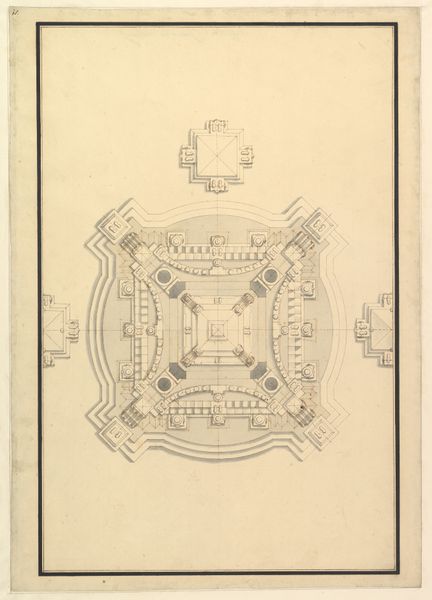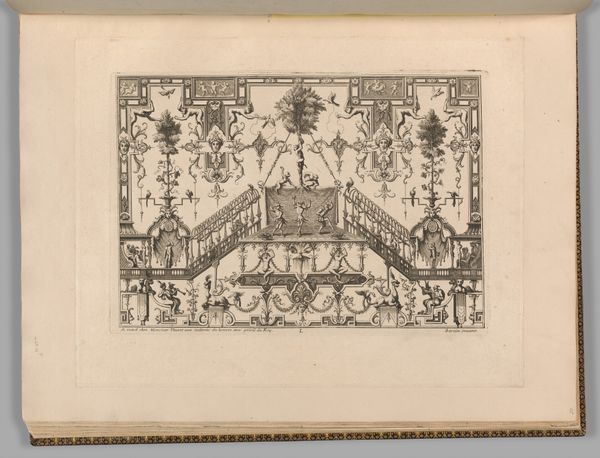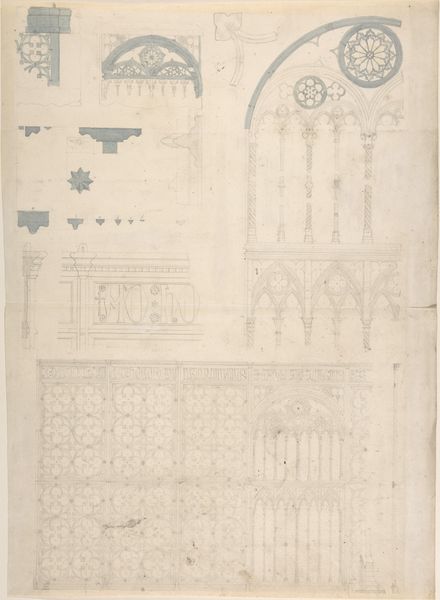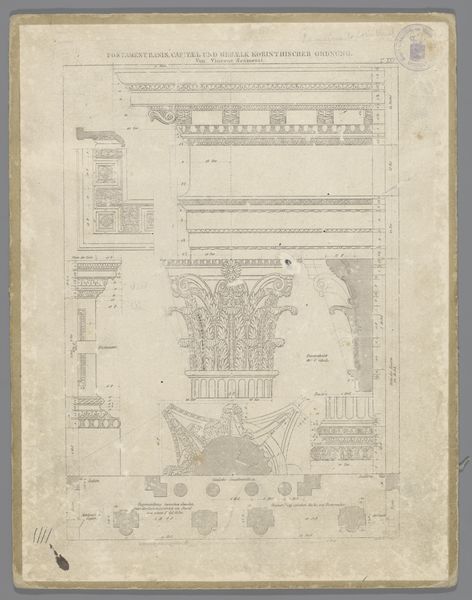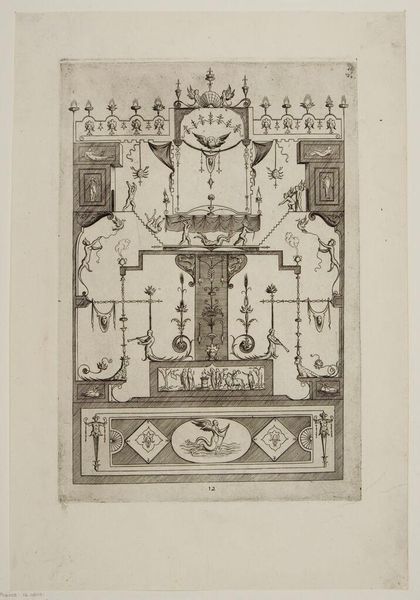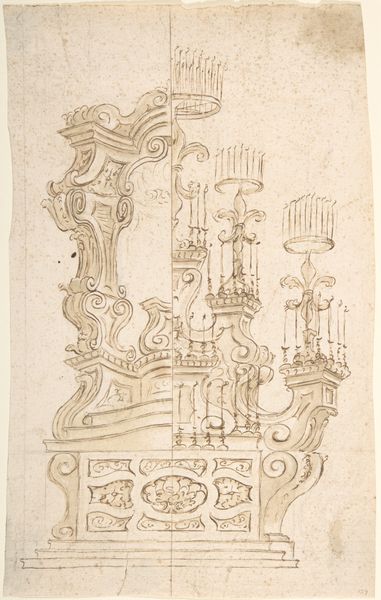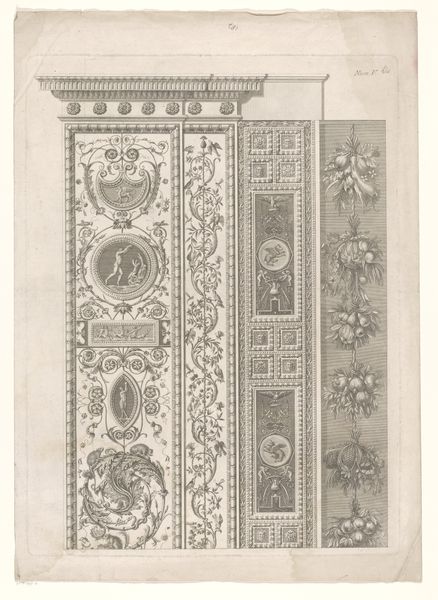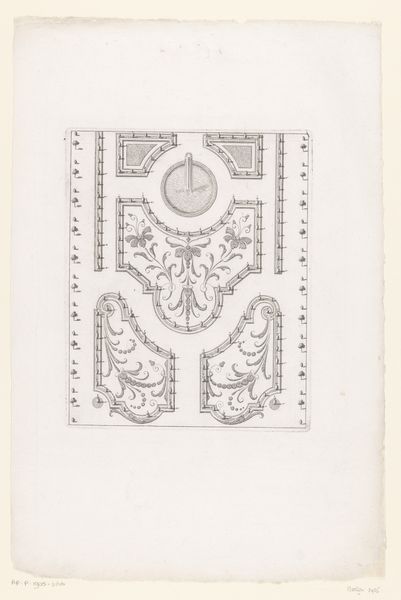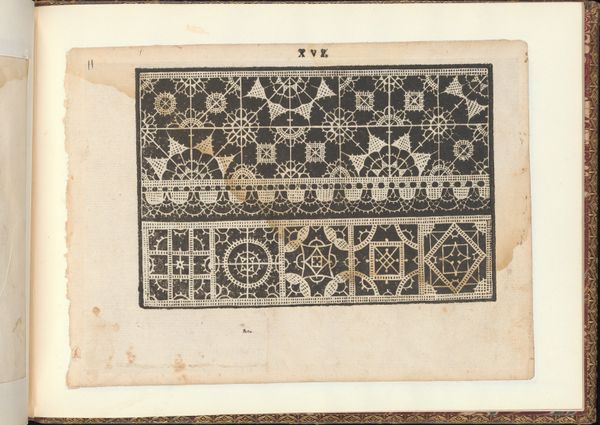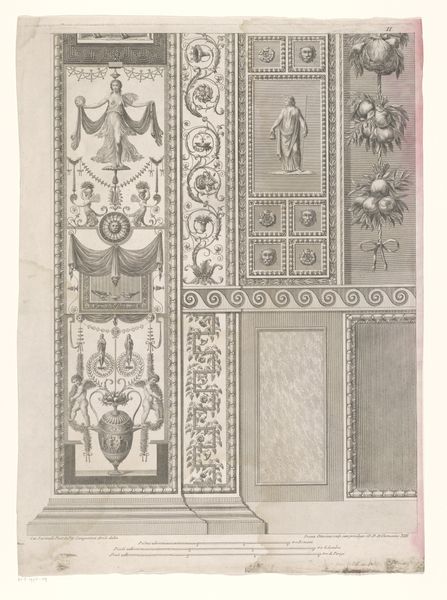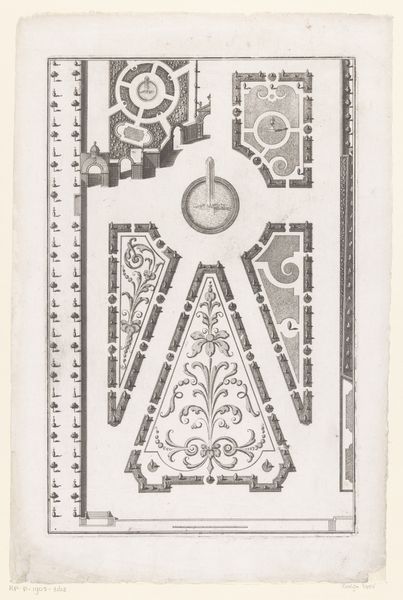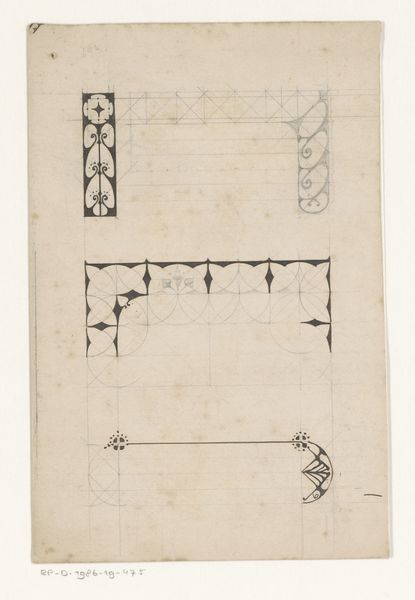
"Forestilling på den ved Holstenhuus nye anlagde Have tegnet af G. D. Tschirscke, Bÿg-mester. Anno 1753" 1720 - 1775
0:00
0:00
print, etching, engraving
# print
#
pen sketch
#
etching
#
landscape
#
etching
#
geometric
#
cityscape
#
engraving
Dimensions: 403 mm (height) x 294 mm (width) (plademaal)
Curator: Ah, look at this beauty! We're examining "Forestilling på den ved Holstenhuus nye anlagde Have tegnet af G. D. Tschirscke, Bÿg-mester. Anno 1753," a cityscape from the 18th century. The artist, Jonas Haas, rendered this view using printmaking techniques, specifically etching and engraving. What's your take on it? Editor: Whoa, okay. Immediately, I see obsessive order, like a meticulously planned ant farm. But rendered with such fragile lines; the mood feels almost… melancholy, even with all that geometric rigor. It's like a lost civilization map! Curator: That melancholic feel resonates. This cityscape, representing a garden, speaks to the deep human desire to control nature. We impose geometry—squares, circles—onto organic forms, a powerful symbol of dominion. And this impulse reveals itself throughout history. Editor: Absolutely! And this piece captures a specific moment: this “Holstenhuus nye anlagde Have” - the title itself breathes old-world propriety. But the etching! It allows this ghostly image to emerge; it makes me question the very concept of lasting control or imposed order. It has vanished, that world... except here on this frail surface! Curator: Exactly. What we perceive now—the fragility, the melancholy—becomes layered upon the initial intent of celebrating the garden's design. This artwork's power lies in reminding us that memory and physical representation morph through time, embodying new meaning for each new beholder. The garden lives now within the network of meaning the etching represents. Editor: I love how you framed that. A static depiction, brimming with intent, constantly shifting its face for new audiences. If an image embodies history's fingerprints, this one carries a full handprint! Looking at this… now I wonder about the people who walked those meticulously drawn paths! What would they make of my seeing it this way? Curator: As custodians, we too shift perspectives when new interpretations arrive. In studying a symbolic order that the garden and print represent, and considering the layers of emotion revealed, both memory and intention may breathe as one. Editor: Precisely. Beautiful piece—so many stories buried in the ink. Thanks for revealing a little bit.
Comments
No comments
Be the first to comment and join the conversation on the ultimate creative platform.
